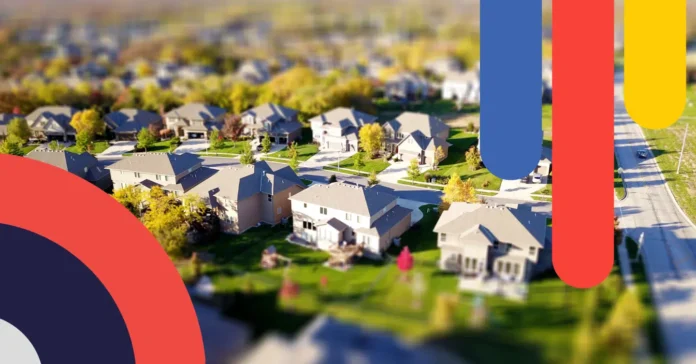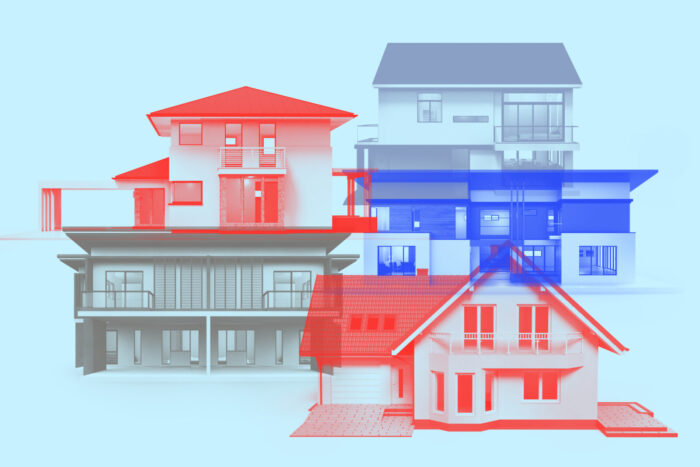
The year 2024 holds great anticipation for the real estate sector as industry experts and enthusiasts eagerly await the unfolding of a new era.
With rapid advancements in technology, shifting market trends, and an evolving global economy, the question on everyone’s mind is: how will the real estate landscape transform in the coming years?
As we delve into the possibilities and predictions ahead, one thing is certain – 2024 promises to be an exhilarating and pivotal year for real estate professionals and investors alike.
The real estate sector is transforming digitally with artificial intelligence, blockchain, and virtual reality advancements.
These technologies streamline processes, improve customer experiences, and revolutionize property management and investment strategies. Sustainability is crucial, leading to eco-friendly developments and green building practices.
Global economic shifts and geopolitical events will also likely impact real estate investment.
2024 Real Estate Market – What Are The Anticipations?

Given below are some major anticipations for the real estate sector in 2024—
1. Increased Demand For Suburban And Rural Properties
There are several reasons why experts predict a shift towards suburban and rural properties in the 2024 real estate market.
Firstly, the ongoing COVID-19 pandemic has reshaped people’s priorities and preferences regarding their living arrangements.
The experience of lockdowns and remote work has made many individuals and families reassess their housing needs, seeking more space, privacy, and access to nature.
Remote work and flexible schedules have enabled people to live further away from urban centers, allowing them to explore suburban and rural areas with a quieter lifestyle.
This flexibility has opened up possibilities for homebuyers, who can prioritize larger homes, spacious yards, and community over city proximity.
Additionally, the affordability of suburban and rural properties compared to urban counterparts is another driving factor.
2. Decline In Demand For Urban Properties
Urban property sales will decline in 2024 due to remote work, affordability, and the trend toward larger living spaces and nature access.
Remote work policies have shifted from expensive urban areas to suburban and rural living, with housing prices often more affordable.
The trend towards sustainable living spaces and nature access exacerbates the decline in urban property sales.
People are now seeking solace in quieter, more serene environments, reducing the appeal of urban living with its crowded streets and limited green spaces.
This shift in preference is causing a slowdown in the real estate market, leading to lower property prices and longer selling times for urban properties.
This shift in the market dynamics also leads to decreased construction activities and job opportunities within the urban real estate sector.
Overall, the anticipated decline in urban property sales in 2024 is reshaping the real estate market and forcing industry players to adapt to the changing preferences of homebuyers.
3. Shift Towards Sustainable And Eco-Friendly Homes

The real estate market 2024 is shifting towards eco-friendly homes due to growing concerns about climate change and environmental sustainability.
Developers and builders like Rising Realty Partners are adopting innovative approaches to incorporate eco-friendly features into their projects, such as energy-efficient appliances, solar panels, green roofs, and rainwater harvesting systems.
These homes reduce carbon footprints and provide homeowners with significant cost savings. The growing interest in eco-friendly homes is driven by increased awareness of the environmental impact of traditional housing and the need for sustainable alternatives.
This shift in mindset has led to a surge in demand for homes that prioritize energy efficiency, renewable energy sources, and responsible water management.
Developers and builders prioritize eco-friendly features in their projects to cater to this growing market.
4. Integration Of Smart Home Technology
The 2024 real estate market is embracing the integration of smart home technology as homebuyers increasingly seek properties with advanced features and automation capabilities.
These features enhance convenience and comfort and increase a home’s value and appeal to potential buyers.
Real estate developers and agents recognize smart home technology’s significance in property development to stay competitive.
Integrating voice-activated assistants, automated lighting, and security cameras attracts a wider buyer base and sets developers apart in a crowded market.
Smart features like voice-activated assistants, automated lighting systems, and security cameras improve functionality and energy efficiency, enabling homeowners to control their homes remotely.
These features appeal to tech-savvy buyers who value efficiency and connectivity. Smart home technology also offers valuable insights into energy usage, enabling informed decisions to reduce carbon footprint and lower utility bills.
In conclusion, smart features are essential for real estate developers and agents to stay ahead.
5. Potential Rise In Interest Rates
The 2024 real estate market is expected to experience a rise in mortgage interest rates, prompting industry experts to monitor the situation and analyze its potential impact closely.
The exact trajectory of interest rates remains uncertain, but it could cause a slowdown in new mortgage demand, a decrease in home sales, and a shift toward a more balanced market.
Additionally, rising interest rates could affect existing homeowners with adjustable-rate mortgages (ARMs), as their monthly payments could increase, putting financial strain on those struggling to make ends meet.
Furthermore, higher interest rates could discourage homeowners from refinancing their mortgages, limiting their ability to access equity or take advantage of lower interest rates in the future.
Overall, a rise in interest rates could have far-reaching effects on the housing market, impacting buyers and sellers.
Emerging Property Types In 2024

In 2024, the real estate market is gaining popularity for unique property types like co-living spaces and mixed-use developments.
Co-living spaces offer affordable housing options and community collaboration, while mixed-use developments combine residential, commercial, and recreational areas for convenience and accessibility.
These developments feature pedestrian-friendly designs, walkable streets, and public spaces, encouraging interaction and connectivity.
Commercial spaces support local businesses and create a diverse community. These developments prioritize sustainability, incorporating green spaces, energy-efficient designs, and alternative transportation options to reduce environmental impact.
Residents benefit from these developments’ convenience and amenities while contributing to a more sustainable and environmentally conscious lifestyle.
What Does The Future Beholds For The Real Estate Sector?
The real estate sector faces significant transformation due to rapid technological advancements, demographic shifts, and changing consumer preferences.
However, it also faces economic fluctuations, environmental concerns, and regulatory changes.
Key future trends include digital transformation, such as virtual reality tours, online property listings, smart home automation, and blockchain transactions.
This technology improves efficiency and convenience for buyers and sellers while enabling real estate professionals to streamline operations and provide personalized experiences.
Technology is driving the development of smart cities and sustainable buildings, optimizing energy usage, reducing carbon emissions, and improving quality of life.
Smart cities use IoT devices and advanced data analytics, while sustainable buildings use green materials, renewable energy sources, and energy-efficient systems to minimize environmental impact.
These advancements contribute to a healthier, more livable environment.
















